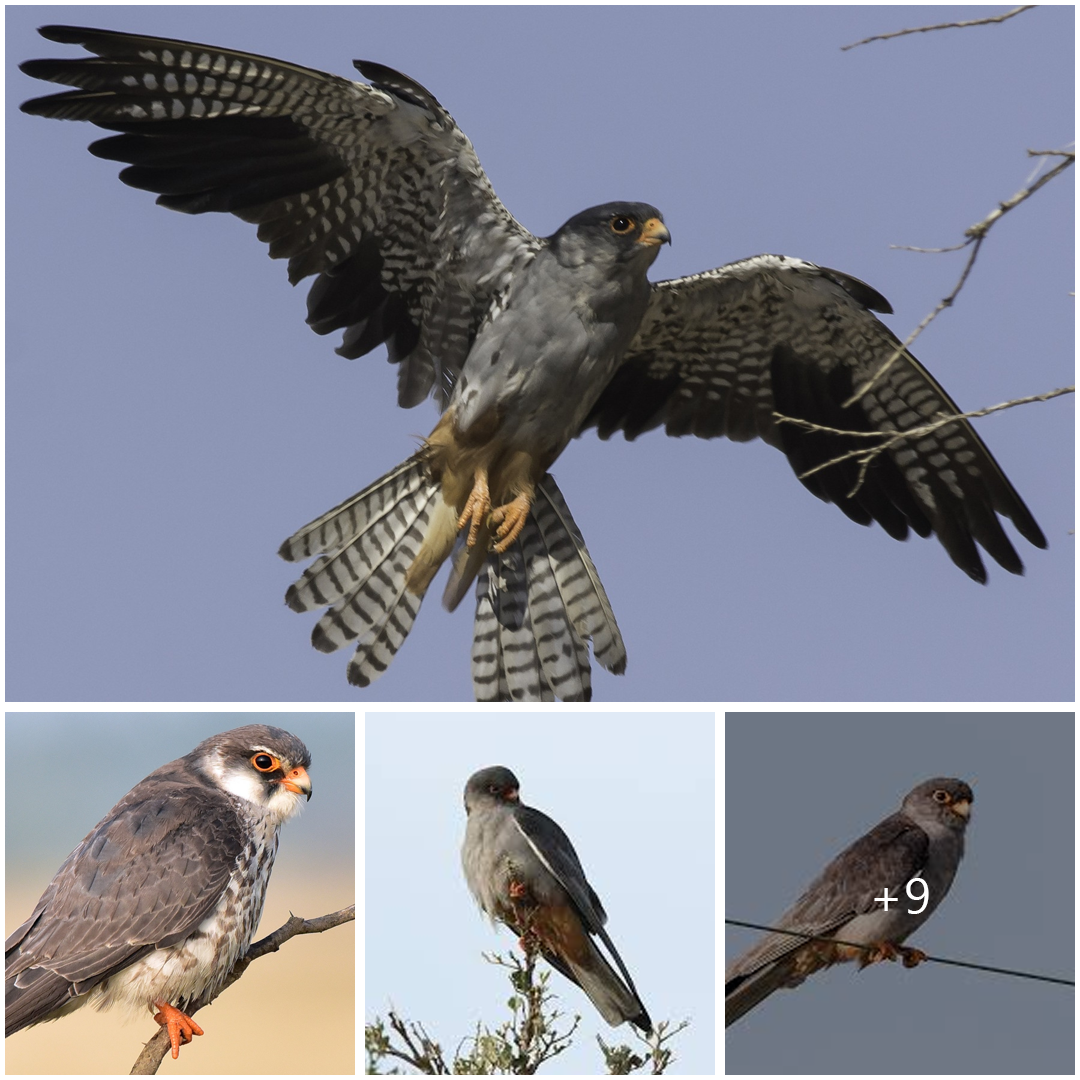
Amur Falcon: A Magnificent Migrant of the Skies
Introduction: The Amur Falcon (Falco amurensis) is a striking bird of prey renowned for its remarkable migration journeys spanning thousands of miles. From its breeding grounds in eastern Asia to its wintering grounds in southern Africa, this small falcon captivates with its endurance and elegance. In this article, we delve into the life and journey of the Amur Falcon, exploring its habitat, behavior, and the conservation challenges it faces.
Habitat and Distribution: The Amur Falcon is primarily found in the taiga and forest-steppe regions of eastern Asia, including parts of Russia, China, and Mongolia, where it breeds during the summer months. Come autumn, these falcons embark on an extraordinary migration southward, traversing continents to reach their wintering grounds in southern Africa. Along the way, they navigate diverse landscapes, including grasslands, wetlands, and savannas, showcasing their adaptability and resilience.
Migration: The migration of the Amur Falcon is a spectacle of nature. Flocks numbering in the thousands gather in northeastern Asia, forming swirling masses in the sky as they prepare for their epic journey. With remarkable precision, they navigate across vast distances, utilizing thermal currents and prevailing winds to aid their passage. Their migration route takes them through challenging terrain, including deserts and open oceans, yet they press on with determination, driven by instinct and the need to reach their wintering grounds.
Behavior and Diet: During the breeding season, the Amur Falcon feeds primarily on insects, showcasing agile flight maneuvers as it hunts its prey. In contrast, during migration and wintering periods, it adjusts its diet to include a variety of insects, small birds, and even bats. Known for their gregarious nature, Amur Falcons often roost and hunt in large groups, displaying cooperative behavior that enhances their survival chances.
Conservation Challenges: Despite their remarkable abilities, Amur Falcons face numerous threats throughout their migration journey. Habitat loss and degradation in both breeding and wintering areas pose significant challenges. Furthermore, indiscriminate hunting and trapping, particularly in parts of Asia, have led to population declines. Conservation efforts, including habitat protection, international cooperation, and community engagement, are essential to safeguarding the future of this iconic species.
Conclusion: The Amur Falcon’s annual migration stands as a testament to the awe-inspiring power of nature. From the vast forests of Asia to the sweeping plains of Africa, these falcons undertake an incredible journey that inspires wonder and admiration. As stewards of the planet, it is our responsibility to ensure that these magnificent migrants continue to grace the skies for generations to come.
In the face of mounting challenges, concerted efforts are needed to conserve their habitats, mitigate threats, and raise awareness about the importance of preserving biodiversity. By working together, we can secure a brighter future not only for the Amur Falcon but for all species that share our planet’s diverse ecosystems.





